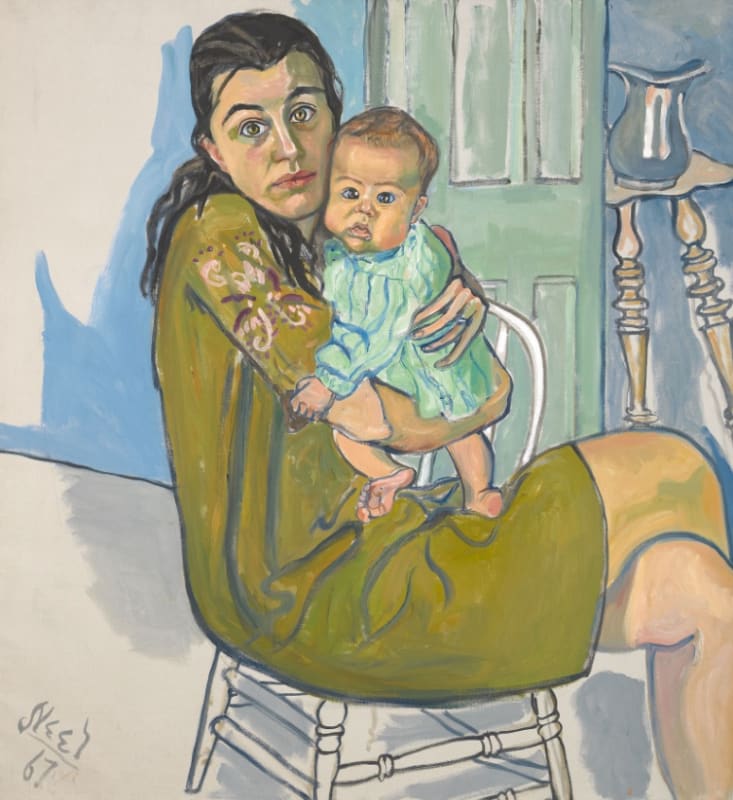The Soul of Alice Neel
By Claire Messud
More than thirty years after her death, the oeuvre of American painter Alice Neel attracts ever greater interest, and seems only ever more relevant: the substantial and moving exhibition of her paintings currently at the Gemeentemuseum in The Hague is the latest indication of this groundswell of attention, including various shows and catalogues in addition to a fine biography by Phoebe Hoban and a biographical film directed by Neel’s grandson, Andrew Neel. The current exhibition (which recently closed at Helsinki’s Finnish National Gallery and will travel next to Arles, France and from there to Hamburg, Germany) has occasioned the beautiful volume Alice Neel: Painter of Modern Life.
Neel’s portraits are rarely serene but always memorable. Her early paintings range from the unsettling to the disturbing. In her nude painting of her estranged daughter Isabetta (1934, repainted 1935), the prepubescent girl stands arms akimbo with one foot forward, her gaze frank but also unseeing, her child’s body frank also, but flattened and greenish, her feet peculiarly large. In the Degenerate Madonna (1930), a mother notable chiefly for the ghostly black nimbus of her hair, a mouth like a gash, and fierce elongated nipples like bloody daggers, overlooks a ghastly-grey bald infant with a skull of hydrocephalic proportions, tiny crooked features and stiff white legs like a doll’s; while the faint profile of a second bald-headed child—or the infant’s reflection—looms bodiless in the background.
Neel’s later paintings largely eschew such melodrama, but they are always uneasy, inviting the viewer into a direct and often alarming intimacy with their subjects. Awkwardness abounds, and with it sometimes dark comedy, as in Victoria and the Cat (1980), a portrait of one of Neel’s grandchildren, naked and bashful, with rounded shoulders and knock-knees, clutching to her breast an enormous grinning calico cat, its tail as luxuriant as a show horse’s. Neel’s famous naked self-portrait (1980) depicts the artist in old age, perched on a blue and white striped sofa surrounded by blocks of vital color—green, yellow, blue—calm and fearless in herself, staring at the viewer through slightly skewed glasses (her only attire), mouth firmly downturned and cheeks ruddy above the deliquescence of her aged body, a sinking galleon of pale flesh. In one powerfully knuckled greenish hand, she holds a paintbrush; in the other, drooping and veinless, a white cloth. Her right foot, bluish, splays unnaturally. But as so often with Neel’s paintings, it’s the face you are drawn back to, in this case the gaze wary but defiant, as if she looks death itself in the eye.

